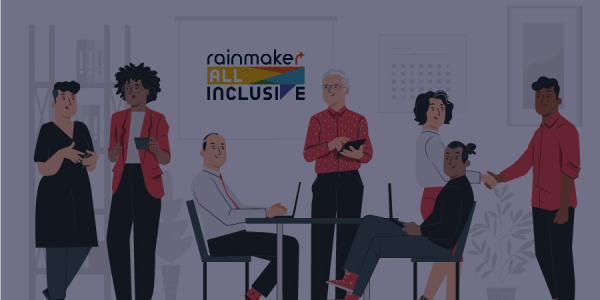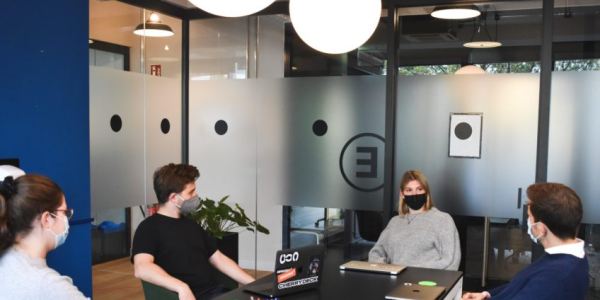Sexual harassment in the workplace is an enduring problem that persists despite the legal and social consequences implemented to combat it. Many victims are reluctant to report incidents due to fear of retaliation or a lack of confidence in the justice system. This has led to the normalization of such behavior, further perpetuating the problem.
According to a report by the Council of Ethics of the Women’s Indian Chamber of Commerce and Industry (WICCI), over 50% of working professionals in India have acknowledged experiencing inappropriate physical contact or advances in their workplaces. The survey, which was based on 23,584 unique responses from 1,101 individuals, showed that nearly 81% of the respondents were under the age of 30. These statistics clearly demonstrate the widespread nature of sexual harassment in Indian workplaces.
Interestingly, targets of sexual harassment and bystanders often struggle to identify any verbal, physical or visual forms of misconduct. Cornell University published a report highlighting this issue and found that only a meager 6% of the participants could correctly identify such incidents.
Unrecognized, unreported or unaddressed due to a lack of awareness or fear of retaliation, sexual harassment can have serious legal implications and negatively affect workplace morale, engagement, retention and ultimately a company’s reputation and bottom line.
Recognizing and Addressing Sexual Harassment: Understanding the Warning Signs
Sexual harassment in the workplace is not always obvious. It need not necessarily involve overtly suggestive comments or advances. Any form of unequal treatment based on an individual's gender may qualify as sexual harassment. Often, sexual harassment in the workplace starts subtly.
Here are some examples:
a) Repeated bodily contact -Initially, the harasser may not directly attempt to touch the victim inappropriately. Instead, they may brush against the victim when passing in a hallway or reaching for objects. While accidental bodily contact is not always out of malice, it can be a precursor to further acts of sexual harassment.
b) Constant flirting -It is natural for an employee to feel attracted to a colleague and ask them out on a date. However, if the coworker declines and the individual making the request persists despite being rejected, it becomes problematic. Continuously flirting or making romantic advances towards someone who has already declined the invitation constitutes sexual harassment, even though many may not recognize it as such.
c) Awkward conversationsIf the harasser initiates uncomfortable conversations about non-work-related matters, especially regarding their or the aggrieved woman’s social life, romantic partners, or sexual preferences, it may be considered sexual harassment.
d) Stalking on digital platforms -Online stalking is a subtle yet insidious form of harassment that has rapidly increased during and after the pandemic. It involves persistent and unwanted online attention and behavior directed at the aggrieved, which can include sending unsolicited emails, messages, or friend requests, monitoring social media activity, and more. This type of behavior can create a hostile work environment and cause significant emotional distress for the aggrieved.
e) Sexist behaviour -Jokes about being promoted because of one’s gender or about how their gender is not “suited” for certain jobs, or how they may have been passed over for an assignment because of their gender can also be considered sexual harassment. Especially when it contributes to creating a hostile work environment for the aggrieved.
The Reasonable Person Standard: A Crucial Element in Preventing and Addressing Sexual Harassment
It's essential to note that the "reasonable person" standard can be a useful tool for employees to recognize instances of sexual harassment when they are uncertain. This standard is based on whether a reasonable person in a similar situation would perceive the behavior as intimidating, hostile, or abusive. It takes into account the perspectives of individuals who are of the same gender, age, community, or disability as the sufferer of harassment.
However, it's crucial to remember that while harassment must be viewed objectively as creating a hostile work environment to be considered unlawful, the subjective perception of the sufferer is also significant. Therefore, utilizing the reasonable person standard can help employees identify and report potentially harmful behavior.
Proactive Steps for Addressing and Preventing Sexual Harassment
Establishing policies and procedures that demonstrate an organization's commitment to preventing sexual harassment is the most effective way to mitigate liability in the event of harassment. In fact, the PoSH Act requires organizations to implement various stringent measures to ensure a safe workplace. Additionally, there are some other steps to consider, such as:
a) Reporting incidents- Sufferers of sexual harassment may find it uncomfortable to speak directly with the HR staff. To address this, organizations should provide multiple reporting options to make employees feel safe and supported when coming forward with complaints. Offering various channels of communication, such as email, phone, or questionnaires, can ensure that employees have choices and can report incidents in a way that best suits their comfort level.
b) Protection against retaliation- Reporting harassment can be daunting for employees who may have already endured a hostile work environment. It is crucial that employees feel supported and safe when coming forward with such complaints. One effective way to achieve this is to include a clause in policies that assures employees they will not face any negative consequences for reporting sexual harassment. This can help create an environment of trust and transparency and encourage employees to report sexual harassment without fear of retaliation.
c) Transparency- Transparency is essential for both legal and ethical reasons when addressing abusive behavior in the workplace. Handling incidents behind closed doors may leave victims uncertain about reporting future incidents, as they are unfamiliar with the organization's process for addressing harassment. By being transparent in its approach to addressing harassment, an organization can build trust and confidence among its employees and encourage a culture of openness and accountability.
d) Training- To maximize the impact and effectiveness of sexual harassment prevention efforts, it is imperative to teach and train employees on the impact such acts can have on sufferers and the consequences of engaging in them. Regular training is a simple but powerful tool that can significantly aid in this effort, allowing organizations to reinforce company policies, procedures, and values related to sexual harassment prevention.
Wrapping Up
In today's complex and diverse workplace, it is crucial for employees at all levels and locations to be able to recognize and report unacceptable behavior, specifically sexual harassment. Training on preventing sexual harassment can be a powerful strategic tool to educate, influence, and motivate positive behavior and change throughout an organization. When customized to an organization's specific culture, industry, and workforce, such training can have an even greater impact, helping to foster a workplace culture that values respect, inclusivity, and safety for all employees. This is something that benefits everyone involved.
Author: Sagnik Mukherjee, Legal Associate, Rainmaker Directions and Contributions: Akanksha Arora, AVP-Legal, Rainmaker
Disclaimer: No information contained in this website may be reproduced, transmitted, or copied (other than for the purposes of fair dealing, as defined in the Copyright Act, 1957) without the express written permission of Rainmaker Online Training Solutions Pvt. Ltd.










